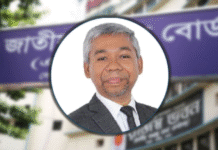By Syed A. Al-Muti and Nayef Ahmad

The government of Bangladesh and the two primary Bangladeshi leather industry trade associations reached a historical agreement last month to transfer the leather industry from central Dhaka to Savar, a new, environmentally compliant industrial zone on the outskirts of the city. According to the president of the Bangladesh Tanners Association, the new location could boost the industry’s export revenues from $1-5 billion. Economists predict that if the leather industry continues its impressive growth, it may even challenge the ready-made garment sector as one of Bangladesh’s most valuable exports.
The relocation to Savar is particularly urgent now because of the serious concerns that foreign customers have expressed over the environmentally damaging practices of the leather industry in its current location, Hazaribagh. The Daily Star reported last week that an estimated 21,600 cubic meters of environmentally hazardous toxic waste, including chromium, sulfur, and ammonium are emitted daily from the tanneries in Hazaribagh. In contrast, once the industry is set up in Savar, the environmental impact is expected to be minimized by several centralized waste-treatment facilities, including a central effluent treatment plant (CETP) for treating liquid waste, a solid waste management system, and a chrome recovery unit.
These concerns became even more significant in 2012 after the publication of a Human Rights Watch report on the negative health effects the leather industry has on workers and Dhaka residents. After the report’s release, many major buyers – particularly from the European Union – warned that they might discontinue sourcing from Bangladesh if environmental compliance was not ensured. In fact, Bangladeshis firms are already being excluded from the international arena, and have not been invited to recent global leather fairs due to their environmental non-compliance.
The journey toward this step has been long – the relocation project was first proposed in 2003. However, political divisions within the leather industry associations and disagreements between the government and the leather sector representatives over binding constraints such as the funding of a central effluent treatment plant, compensation to leather factories for production losses during relocation, and the costs related to upgraded layout of factories at the new estate, delayed the project.
In January 2013, a team from The Asia Foundation and the South Asian Network on Economic Modeling (SANEM), with support from Australian Aid, reached out to stakeholders in the private sector and the government to create a coalition of individuals and institutions who were committed to resolving these constraints that were holding back the project.
The overriding political issue was the fact that the members of the leather associations are divided into several different factions, based on home district and political affiliation. A significant portion of the leather entrepreneurs bear allegiance to the opposition party, and thus apparently had an interest in delaying the relocation project beyond the 2014 national election in order to prevent the ruling political actors from being able to claim it as a success during its tenure.
The coalition’s main strength was its ability to build confidence and address the mistrust between the private- and public-sector players by bringing them together to engage in dialogue. The coalition pointed out the major issues affecting the sector, provided guidance on future steps, shared international experiences, and reminded players of the future potential that the industry can realize by relocating, and the negative consequences of not doing so.
The coalition was able to solve the dispute over funding of the central effluent treatment plant (CETP) by showing examples from other countries, particularly in the South Asia region, where facilities like this are funded by the government, rather than by individual factories. As a result of the coalition’s efforts, the Minister of Finance and the Minister of Industries accepted an agreement that called for the government to fund 80 percent of the total cost of the new industrial estate (and the entire cost of the central effluent treatment plant) and approve about $32 million to establish a compensation fund for the relocated entrepreneurs. The government’s policy was in favor of not paying any compensation, as it felt that the industry owners would be the beneficiaries of potential production growth at the new industrial estate. However, the coalition successfully pushed for a reform in the government policy, arguing that there are significant economic gains for the country in terms of export growth and employment and that the government should offer incentives to the leather firms and provide support for their initial capital investment in line with the requirement of the new industrial estate.
Due to the complexity and scale of the project, the two ministers had to invest significant political capital to persuade the prime minister of the necessity for these provisions. Subsequently, the country’s top economic policymaking body, the Executive Committee of the National Economic Council (ECNEC), reviewed and accepted these decisions. These developments greatly increased the leather enterprise owners’ interest in the relocation project.
Syed Manzur Elahi, a renowned businessperson and the leader of the leather sector in Bangladesh, said that in the last year, the “coalition has achieved what could not be achieved in the last 10 years, and that this was made possible by its comprehensive understanding of the political dynamics between the concerned stakeholders, and its complementary analytical work.”
The agreement marks a significant intermediate step toward the successful relocation of the industry, but many details and sticking points still need to be resolved, such as the finalization of a mechanism for disbursing compensation to individual leather factories, the completion of layout plans for the entire industrial estate, and an assessment of the applicability of prevailing building codes to the leather enterprises in the new estate.
The coalition will continue to work in these areas, and will also be involved in bringing the potential of the leather sector to the attention of international donors such as the World Bank and the Asian Development Bank, in order to create momentum and interest in the sector, and to ensure that funding will be available for the future expansion of the industry. The coalition will continue to play a crucial role in building relationships with government institutions that will be involved in the upcoming stages of the relocation project, including the Bangladesh Bank and the RAJUK, the urban planning department.
Overall, there is good reason for optimism, and if all goes well from here, the leather industry will relocate to the new estate in Savar by 2015 and we hope to see a robust expansion and increased environmental compliance by the Bangladeshi leather industry.
Syed Al-Muti is The Asia Foundation’s associate director for Economic Development Programs and Nayef Ahmad is a program officer for the Bangladesh Economic Development Program, both based in Dhaka. They can be reached at syed.al-muti@asiafoundation.org and nayef.ahmad@asiafoundation.org, respectively. The views and opinions expressed here are those of the individual authors and not necessarily those of The Asia Foundation.
Source: Asia Foundation









